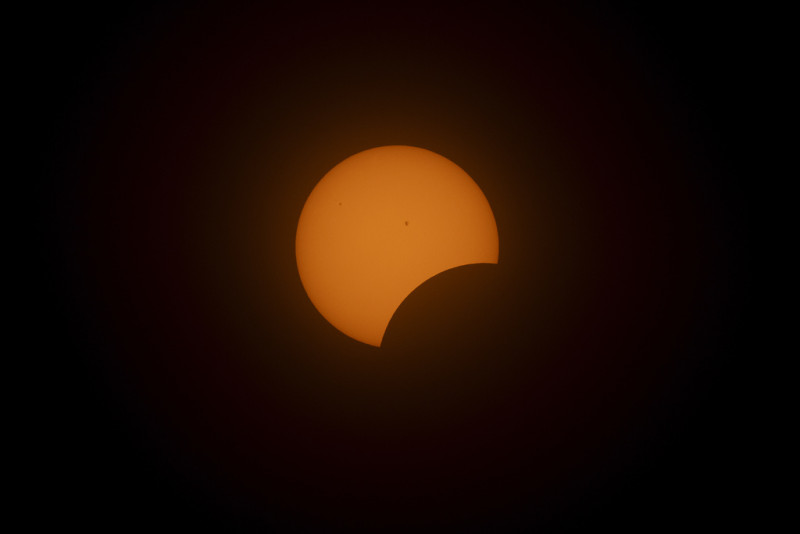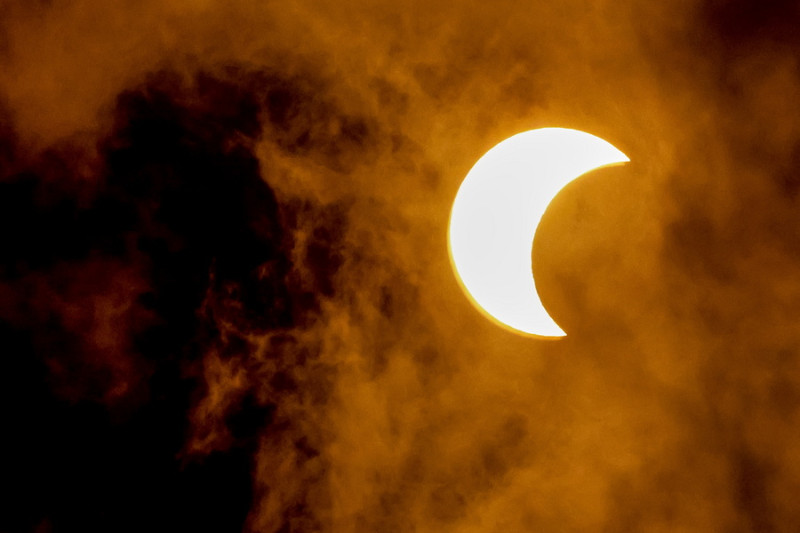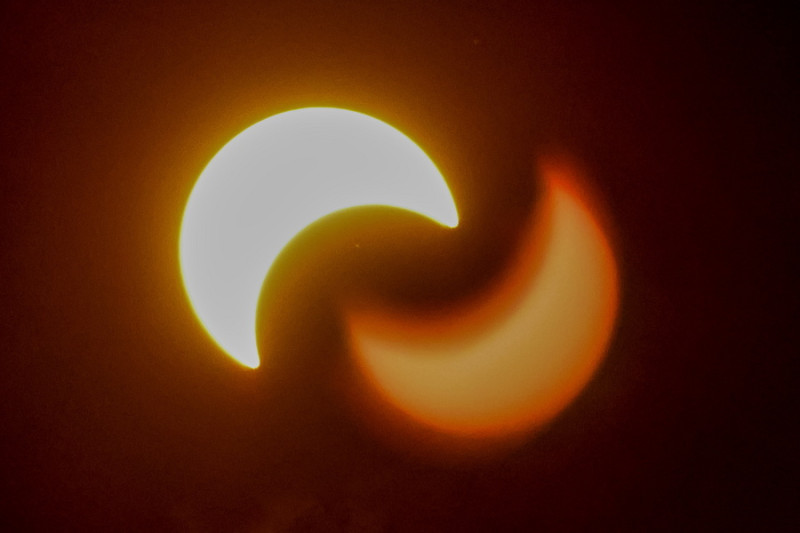The solar eclipse was visible in 15 US states, from Texas to Maine, before residents of eastern Canada got their turn – The total eclipse phenomenon
With eyes on the sky. The total solar eclipse passed over North America on Monday, putting on a “dramatic show” visible to tens of millions of people. The eclipse lasted between 3½ and 4 minutes, according to NASA. For many Americans, this was the last chance to see a total solar eclipse for the next 20 years.
The total solar eclipse captivated North America, even in areas where the phenomenon was partially visible.
The Mexican resort of Mazatlán on the Pacific coast was the first popular sighting site of the rare phenomenon. Thousands of people had gathered along the promenade, wearing special glasses. Many waited comfortably on sunbeds, while an orchestra played music from the movie Star Wars.
At the climax of the act, everyone burst into applause and cheers.
Lourdes Coro, 43, made the 10-hour drive to Mazatlán to be among the first to witness the spectacular solar eclipse. “The last one I had seen was at age 9,” he said.
“The last one I had seen was at age 9,” he said.
The total solar eclipse was visible in the US today Tuesday for a much longer period than in 2017. Today the maximum duration reached 4 minutes and 28 seconds in places, compared to 2 minutes and 42 seconds seven years ago.
The solar eclipse was visible in 15 US states, from Texas to Maine, before it was the turn of residents of eastern Canada. Small rural towns – such as Advance, Missouri, with a population of about 1,300 – received thousands of visitors. Tim and Gwen Wurst traveled there from Kansas, having consulted weather forecasters.
Weather conditions were not favorable everywhere, as for example in Texas, where it was cloudy.
American authorities had warned those who wanted to admire the phenomenon that they would have to wear special glasses before turning their gaze to the sky, in order to avoid causing damage to their eyes.
The next total solar eclipse is expected in August 2026, but will be visible mainly in Iceland, Portugal, Spain and parts of Russia.
The solar eclipse phenomenon
A solar eclipse is the phenomenon in which the Moon intervenes between the Sun and the Earth, with the result that certain areas of the Earth receive less light than usual. It can be partial, total or annular.
At least two solar eclipses occur each year, while the maximum number of solar eclipses that can occur in a year is five.
A total solar eclipse is a rare celestial phenomenon in which the disk of the moon comes into contact with the disk of the sun, obscuring all traces of sunlight for several minutes. This is because, in the firmament, the two bodies appear to be exactly the same size. This is a cosmic coincidence, since the Sun-Earth distance is about 400 times greater than the Moon-Earth distance, but at the same time the Sun is about 400 times greater than the Moon.
Because the earth’s orbit around the sun is not circular but elliptical, and combined with the moon’s also elliptical orbit around the earth, to the terrestrial observer the two bodies are constantly changing in size. This results in the creation of three kinds of eclipses.
During a total solar eclipse, the size of the moon is such that it completely covers the solar disk. The observer is inside the moon’s shadow (in the figure on the right, the Earth is in the black area). During an annular eclipse the cone of the moon’s shadow does not touch the surface of the Earth. This results in the observer seeing a solar ring around the dark body of the moon (purple area). In a partial solar eclipse the observer sees a percentage of the sun “eaten” by the moon (light purple area).
Total solar eclipses can theoretically last up to 7:30 minutes. Annular solar eclipses can theoretically last up to 12:30 minutes.
Source :Skai
With a wealth of experience honed over 4+ years in journalism, I bring a seasoned voice to the world of news. Currently, I work as a freelance writer and editor, always seeking new opportunities to tell compelling stories in the field of world news.
















